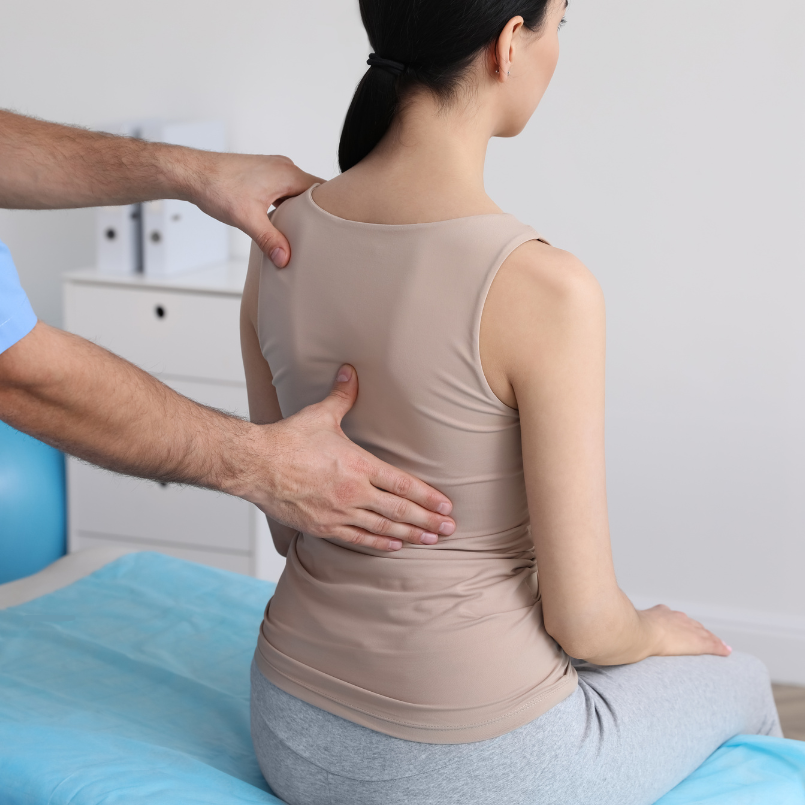15 Oct Myths and Misconceptions About Spinal Decompression Therapy
 Low back pain is a widespread health problem that affects people of all ages. With the progress of treatment, spinal decompression has been developed as a non-surgical alternative to alleviate long-term back pain, herniated discs, sciatica and other spine conditions. It’s become increasingly popular, but there are still a lot of myths and misunderstandings about this therapy that might keep patients from experiencing the benefits for themselves. Let’s set the record straight.
Low back pain is a widespread health problem that affects people of all ages. With the progress of treatment, spinal decompression has been developed as a non-surgical alternative to alleviate long-term back pain, herniated discs, sciatica and other spine conditions. It’s become increasingly popular, but there are still a lot of myths and misunderstandings about this therapy that might keep patients from experiencing the benefits for themselves. Let’s set the record straight.
Myth 1: Spinal Decompression Therapy Is Painful
One of the top myths is that people think spinal decompression therapy hurts. In fact, it is mild and non-traumatic. The treatment involves applying a traction table or similar apparatus to stretch the spine, resulting in negative pressure inside the discs. The vast majority of patients feel very relaxed during their treatment, whilst some actually fall asleep. But any discomfort tends to be mild and temporary.
Myth 2: It’s Only for Severe Back Pain or Surgery Candidates
The vast majority think that spinal decompression is only for those needing surgery. But the treatment can help treat many back and neck complaints, from relatively mild to severe disc problems such as sciatica and chronic muscle-tension patterns. Many patients can avoid surgery if treated promptly with spinal decompression.
Myth 3: Results Are Immediate
Spinal decompression therapy isn’t a quick fix, even if patients do experience some pain relief after one or a few treatments. The nature of the affliction, age, general health status, and compliance determine recovery. Patients typically receive a series of sessions in addition to physical therapy, stretching and postural correction exercises (when indicated) for long-term relief.
Myth 4: It Can Replace Exercise and Lifestyle Changes
Back pain requires time to heal, and you must do more than spinal decompression. Complete the form and get it delivered. Healthy spine patients have daily exercises in addition to axial traction. Therapy does reduce pain and improve disc health, but the client must be actively involved in the process.
Myth 5: It Works for Everyone
Spinal Decompression works for many, but unfortunately, it is not for everyone. People who have fractures, tumours or severe osteoporosis, and some with certain spinal implants, would not be candidates. A complete evaluation by a qualified physiotherapist is necessary for the safety and efficacy of this training.
Myth 6: It’s Expensive and Not Worth It
Patients sometimes bypass spinal decompression, believing that it is expensive. Yet as a non-intrusive option that can save you from costly surgeries and long-term pain, it’s often an investment in wellness. Many advanced clinics (including Bionic SportMed& Physiotherapy) can offer individualized treatment programs that are both effective and affordable.
Wrapping Up
Spinal decompression is a safe, effective and non-surgical alternative for the treatment of many spinal ailments. Here’s a look at six common misconceptions about chiropractic care that should be dispelled, enabling patients to make educated choices and consider this therapy as an option for back and neck pain.
At Bionic SportMed& Physiotherapy, we incorporate spinal decompression into our therapy process, along with personalized care and guidance, so you get the most out of both. Misunderstandings shouldn’t stand in the way of your reclaiming a pain-free life.

